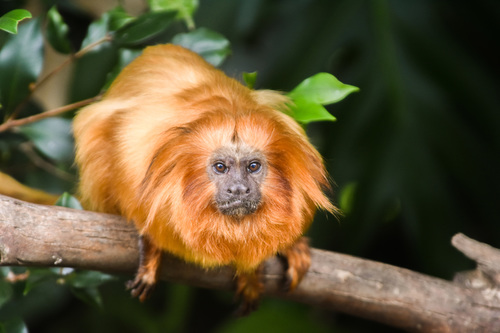
Golden Lion Tamarin
With its radiant golden mane and expressive eyes, the golden lion tamarin (Leontopithecus rosalia) enchants observers. This Brazilian forest dweller thrives in family groups, bustling through treetops. Their vibrant presence highlights the delicate balance of their ecosystem, underscoring the importance of conservation efforts.
8-15 years
Lifespan
550.0 - 700.0 g
Weight
Brown, Black, Gold, Orange
Color
24 mph
Top Speed
Endangered
Conservation Status
Decreasing
Population Trend
Characteristics
Golden lion tamarins are small primates with striking golden-orange fur, native to the Atlantic coastal forests of Brazil. They are known for their social behavior, living in family groups and exhibiting cooperative care of offspring. These arboreal animals play a crucial role in seed dispersal, aiding forest regeneration.
Distribution Range of the Golden Lion Tamarin
Leontopithecus rosalia, commonly known as the golden lion tamarin, is native to the Atlantic coastal forests of Brazil. It is primarily found in the southeastern region of the country, particularly in the state of Rio de Janeiro.
Golden Lion Tamarin's Habitat
Environmental Conditions
The golden lion tamarin inhabits tropical rainforests, which are characterized by high humidity and consistent warm temperatures. The species thrives in lowland forest areas with dense tree canopies that offer a rich variety of fruits and insects, which are crucial for their diet.
Ecological Niche
Golden lion tamarins are arboreal and diurnal primates, relying heavily on the forest canopy for food and shelter. They play a critical role in seed dispersal, which is vital for the regeneration of their forest habitat. Their ecological niche involves foraging for fruits, insects, and small vertebrates, contributing to the ecosystem's balance.
Copyright @ Nature Style Limited. All Rights Reserved.
 English
English